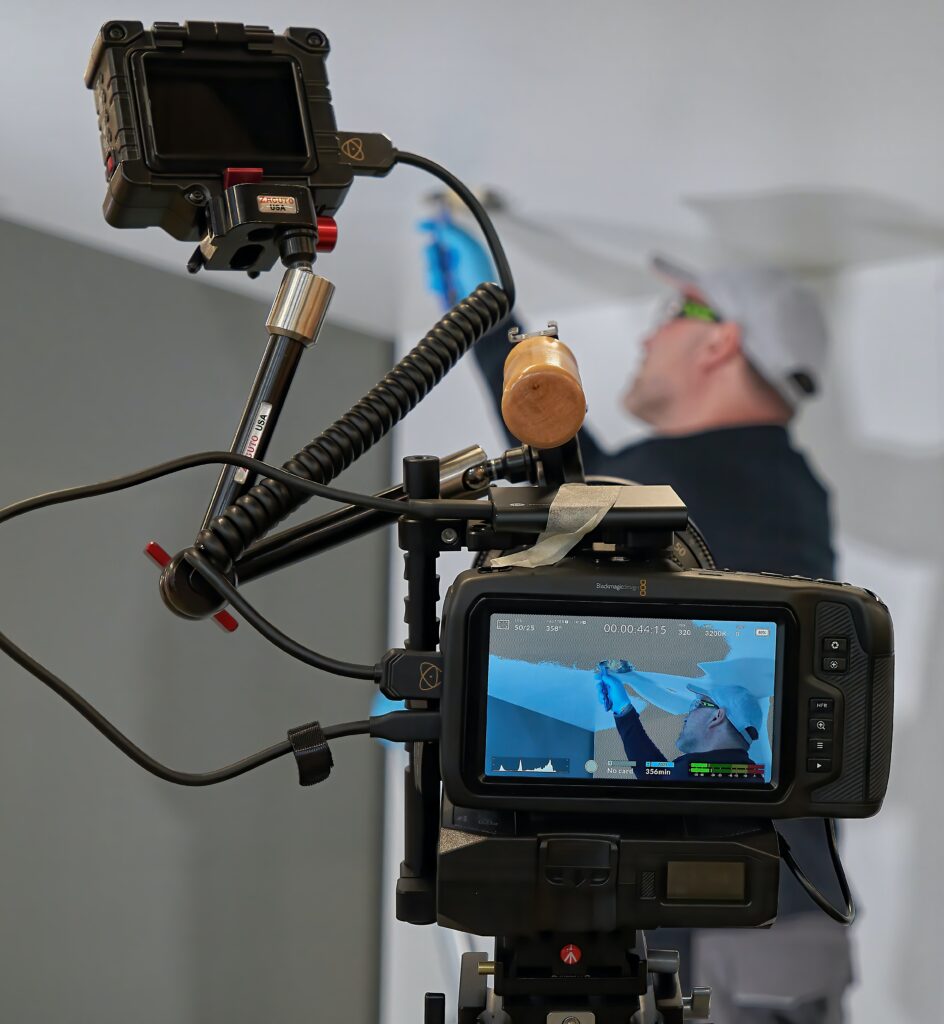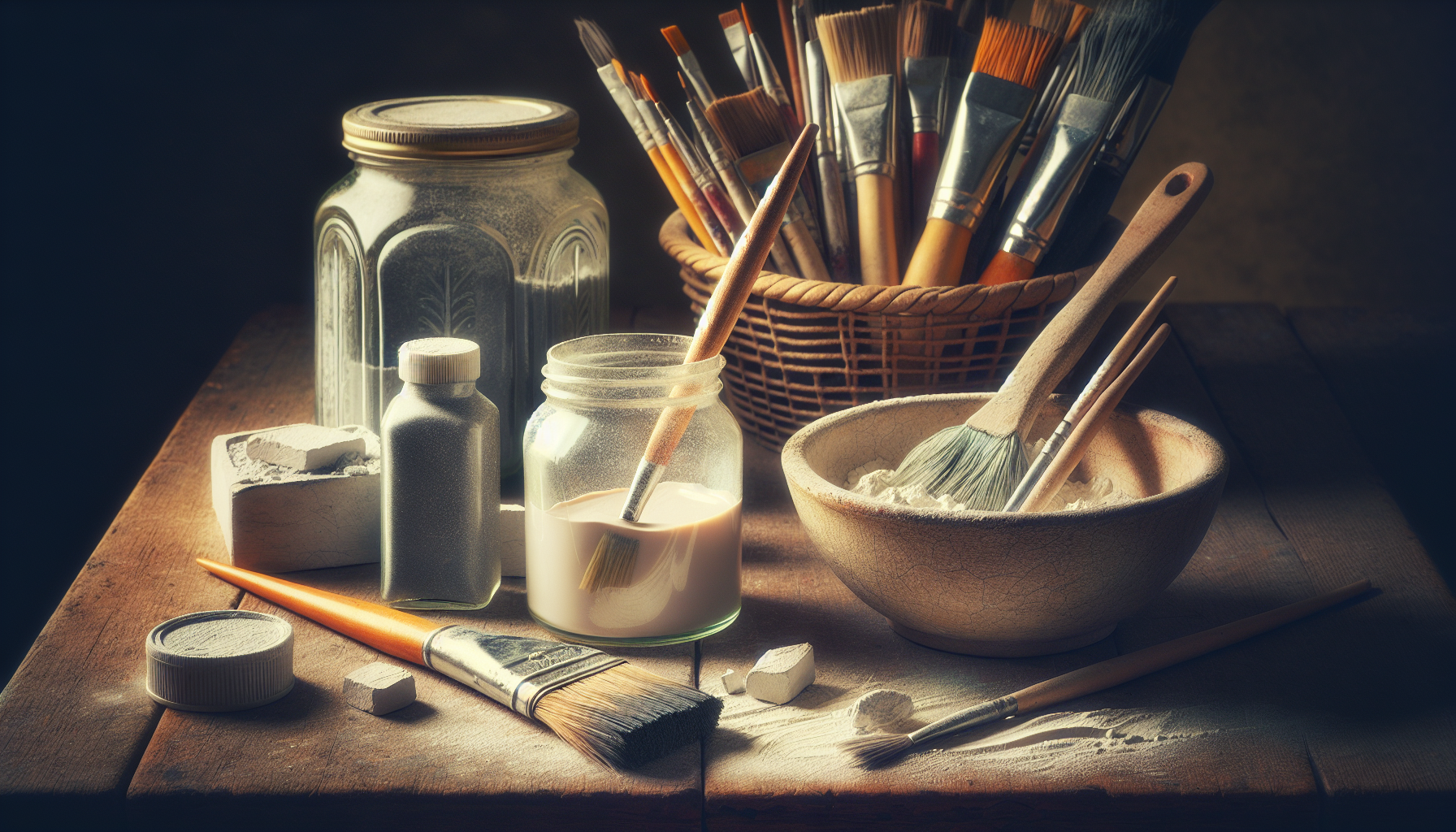So, you’ve just finished creating a beautiful masterpiece on your concrete surface using acrylic paint. Now, you’re wondering how to protect and seal it to ensure its longevity and preserve its vibrant colors. Look no further! In this article, we will guide you through the simple and effective steps on how to seal acrylic paint on concrete, allowing you to proudly display your artwork for years to come. Let’s get started!

Preparing the Surface
Before you begin sealing acrylic paint on concrete, it’s important to properly prepare the surface. Cleaning the concrete surface is the first step in this process. Start by sweeping away any loose dirt, dust, or debris. Then, use a pressure washer or hose to thoroughly clean the concrete. You can also use a mild detergent or concrete cleaner to remove any stubborn stains.
Once the surface is clean, it’s important to inspect the concrete for any damaged areas. Cracks, chips, or other imperfections should be repaired before applying the sealant. Use a concrete patching compound or epoxy filler to fix these areas. Follow the manufacturer’s instructions and allow sufficient drying time before moving on to the next step.
Choosing the Right Sealant
Choosing the right sealant is crucial for achieving a long-lasting and beautiful finish. There are different types of sealants available, each with its own characteristics and benefits. Understanding the different types of sealants will help you make an informed decision.
One popular choice for sealing acrylic paint on concrete is an acrylic sealer. Acrylic sealers are easy to apply, durable, and provide excellent protection against moisture, UV rays, and chemicals. They also enhance the color and sheen of the painted surface. Acrylic sealers come in different finishes, such as glossy or matte, allowing you to choose the look that best suits your preferences.
While acrylic sealers are a popular option, it’s also worth exploring other alternatives. Epoxy sealers provide a thick, protective coating that is highly resistant to chemicals, stains, and abrasion. Polyurethane sealers offer excellent durability and UV resistance, making them suitable for outdoor applications. It’s important to consider factors such as the intended use of the surface, the desired appearance, and the level of protection required when choosing the right sealant.
Gathering the Necessary Tools and Materials
Before you begin applying the sealant, it’s important to gather all the necessary tools and materials. This will ensure a smooth and efficient application process. Here are some essential items you will need:
Protective Gear
Wearing protective gear is essential to ensure your safety during the sealing process. This includes gloves, safety goggles, and a face mask to protect yourself from any potentially harmful chemicals or fumes.
Applicators
There are different applicators you can use to apply the sealant, depending on the size and texture of the surface. For smaller areas, a paintbrush or foam brush can be used. A paint roller or sprayer may be more suitable for larger surfaces. Choose an applicator that will allow you to apply the sealant evenly and smoothly.
Sealant
The sealant itself is, of course, a crucial component. Make sure you choose a sealant that is compatible with acrylic paint and suitable for use on concrete surfaces. Read the product label or consult with a knowledgeable professional to ensure you select the appropriate sealant for your project.
Painters Tape
Painters tape can be used to mask off any areas that you don’t want to be sealed or that require a different treatment, such as edges or joints. It helps to create clean lines and prevent any accidental overspray or seepage.
Applying the Sealant
Once you have prepared the surface and gathered all the necessary tools and materials, it’s time to start applying the sealant. Follow these steps to ensure a successful application:
Testing the Sealant
Before applying the sealant to the entire surface, it’s a good idea to do a test patch in a small, inconspicuous area. This will allow you to evaluate the appearance and ensure compatibility with the acrylic paint.
Applying a Thin Layer
Using your chosen applicator, apply a thin and even layer of sealant to the entire surface. Work in manageable sections, starting from one corner and moving systematically across the surface. Avoid applying the sealant too thickly, as this can lead to uneven drying and potential issues with the final finish.
Allowing Drying Time
After applying the first coat of sealant, allow sufficient drying time as specified by the manufacturer. This typically ranges from a few hours to a day or more, depending on the product and environmental conditions. Avoid walking or placing any objects on the sealed surface during this drying period to ensure a smooth and even finish.
Applying Additional Coats
Once the first coat is completely dry, you may choose to apply additional coats for added protection and durability. Follow the manufacturer’s instructions regarding the recommended number of coats and drying times between each coat. Be sure to maintain a thin and even application with each coat.

Maintaining and Reapplying the Sealant
Sealing acrylic paint on concrete is not a one-time process. It requires regular maintenance and periodic reapplication to ensure the longevity of the seal and the appearance of the painted surface. Here are some important points to keep in mind:
Regular Cleaning and Maintenance
To maintain the sealed surface, regularly clean it using a mild detergent and water. Avoid using harsh chemicals or abrasive cleaners, as these can damage the sealant. It’s also important to remove any spills or stains promptly to prevent them from penetrating the sealant and potentially causing damage.
Signs That the Sealant Needs to be Reapplied
Over time, the sealant may begin to show signs of wear and tear. This can manifest as a loss of shine, reduced water resistance, or increased susceptibility to stains. If you notice any of these signs, it’s time to consider reapplying the sealant. Follow the same steps outlined earlier to prepare the surface and reapply the sealant for continued protection and aesthetics.
Troubleshooting Common Issues
While sealing acrylic paint on concrete is generally a straightforward process, certain issues may arise. Here are some common problems you may encounter and their possible solutions:
Blisters or Bubbles on the Surface
If you notice blisters or bubbles forming on the surface after applying the sealant, it may be due to trapped air or excessive humidity. To fix this, sand down the affected area and reapply the sealant, ensuring proper ventilation during the drying process.
Cracking or Peeling of the Sealant
Cracking or peeling of the sealant can occur due to insufficient surface preparation, improper application, or exposure to extreme temperatures. To resolve this issue, thoroughly remove the damaged sealant, repair any underlying issues, and reapply the sealant following the recommended procedures.
Stains or Discoloration
Occasionally, stains or discoloration may become visible on the sealed surface. This can be caused by spills, chemical reactions, or exposure to UV rays. To address this, clean the area using suitable cleaners and methods, and consider applying a stain-resistant sealant for added protection.

Tips for Achieving the Best Results
To achieve the best results when sealing acrylic paint on concrete, keep the following tips in mind:
Working in a Well-Ventilated Area
Ensure proper ventilation during the sealing process by working in a well-ventilated area or opening windows and doors. This will help minimize exposure to fumes and promote better drying of the sealant.
Following Manufacturer’s Instructions
Always read and follow the manufacturer’s instructions for the sealant you are using. Different products may have specific requirements regarding application, drying time, and reapplication. Adhering to these instructions will help you achieve the best results and ensure the longevity of the seal.
Avoiding Over-Application
Applying the sealant too thickly can lead to pooling, drips, and an uneven finish. Always apply the sealant in thin, even layers to achieve a smooth and consistent coating.
Avoiding Excessive Traffic on the Sealed Surface
While the sealant is drying and even after it has fully cured, avoid placing heavy objects or subjecting the surface to excessive foot traffic. This will help prevent premature wear and damage to the sealant.
Frequently Asked Questions (FAQs)
Can I use any type of acrylic paint on concrete?
Acrylic paint is generally suitable for use on concrete surfaces. However, it’s important to choose a quality acrylic paint specifically formulated for concrete or masonry. These paints offer better adhesion and durability on porous surfaces like concrete.
Is a primer necessary before applying the sealant?
In most cases, a primer is not necessary before applying the sealant over acrylic paint on concrete. However, if the surface has been patched or repaired, using a primer designed for concrete can help promote better adhesion and enhance the performance of the sealant.
Can I seal acrylic paint on outdoor concrete surfaces?
Yes, you can seal acrylic paint on outdoor concrete surfaces. However, it’s important to choose a sealant specifically designed for exterior use. Outdoor sealants offer enhanced UV resistance and weatherproofing properties to protect the paint and concrete from the elements.
How long does the sealant last?
The longevity of the sealant depends on various factors, including the quality of the sealant, environmental conditions, and the level of traffic or use the surface receives. Generally, a well-applied sealant can last anywhere from one to five years. Regular maintenance and reapplication as needed will help extend its lifespan.
Can I wash the sealed surface with water?
Yes, you can wash the sealed surface with water. In fact, regular cleaning with mild detergent and water is recommended to maintain the appearance and cleanliness of the sealed surface. Avoid using harsh chemicals or abrasive cleaners, as these can damage the sealant.




